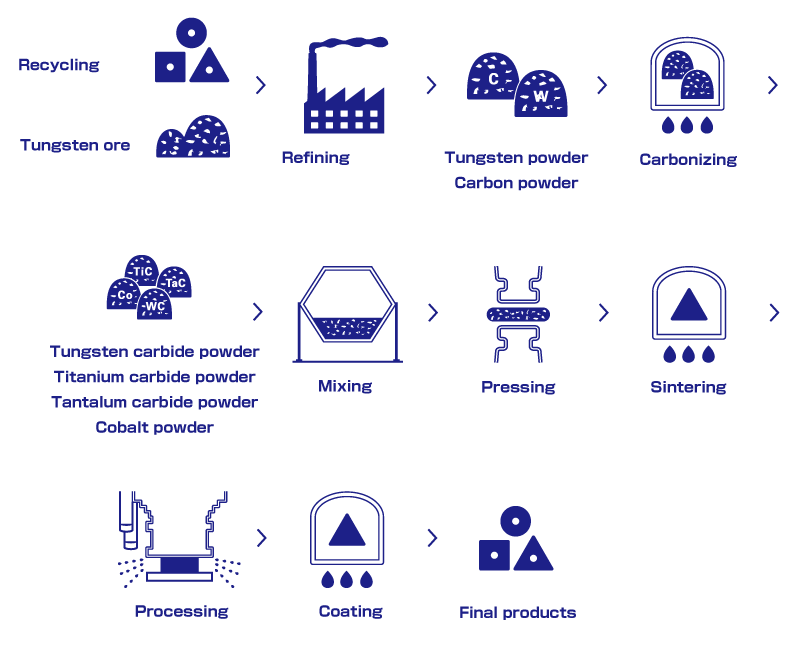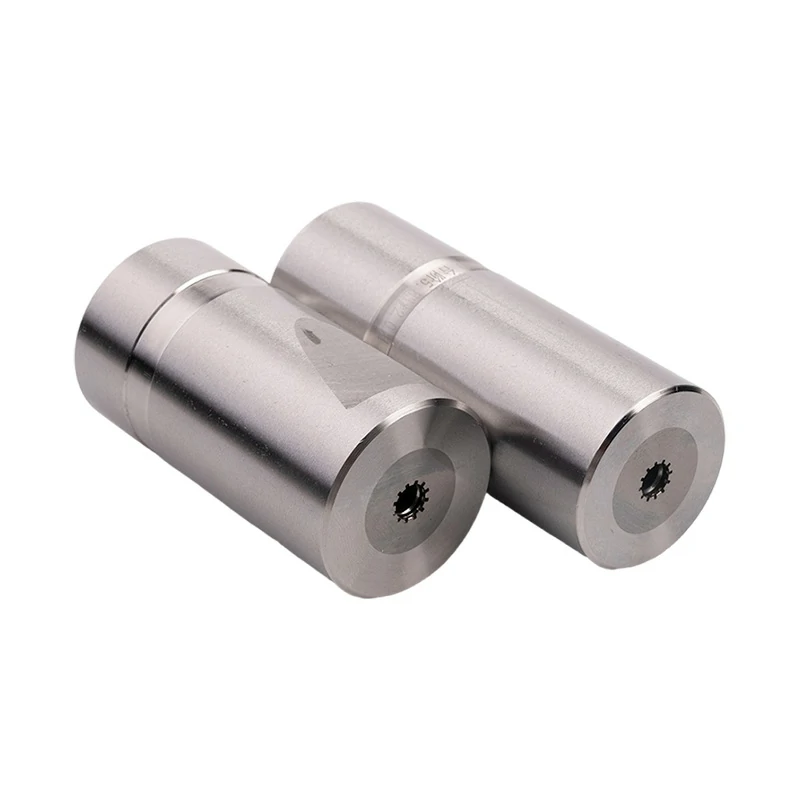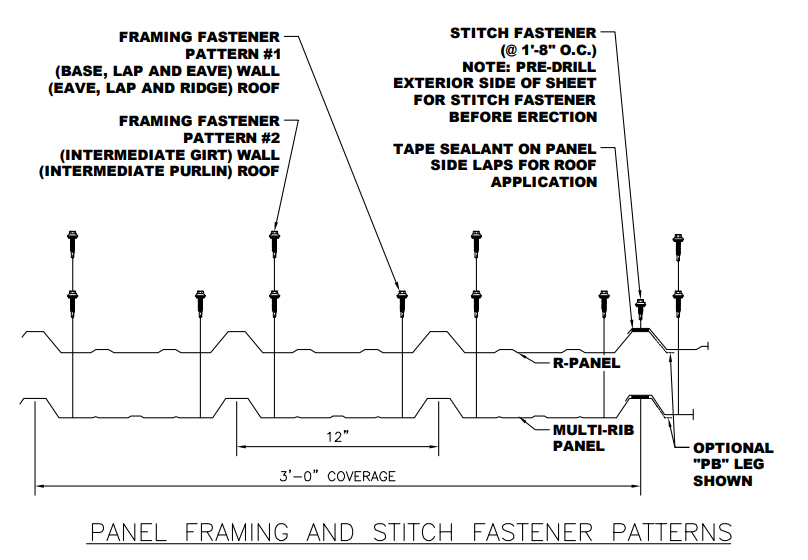Tungsten carbide, commonly referred to as WC, is a chemical compound made up of tungsten and carbon atoms in a 1:1 ratio. Known for its exceptional hardness—nearly matching that of diamonds—and a high melting point of around 2,870°C (5,198°F), tungsten carbide is a powerhouse material in industries requiring durability and resistance to extreme conditions. Its hexagonal crystal structure contributes to its impressive strength and density, making it a go-to choice for high-performance applications. Whether you’re involved in manufacturing, construction, or even jewelry design, understanding tungsten carbide can unlock new possibilities for efficiency and quality.

This guide explores what tungsten carbide is, its properties, how it’s made, its wide-ranging applications, and why it’s a preferred material in modern industry. Let’s dive into the details.
What Makes Tungsten Carbide Special?
Tungsten carbide was first synthesized in the early 20th century as scientists sought materials tougher than steel for industrial use. Its discovery marked a turning point, offering a compound that could withstand intense wear and heat. Today, it’s celebrated for its unique blend of properties that make it indispensable across various sectors.
Properties of Tungsten Carbide
Exceptional Hardness
Tungsten carbide ranks around 9 on the Mohs hardness scale, just below diamond’s 10. This makes it incredibly resistant to scratches, dents, and wear, ideal for tools that face constant friction.
High Melting Point
With a melting point of approximately 2,870°C, tungsten carbide retains its shape and strength even in extreme heat, a critical feature for high-temperature manufacturing processes.
Wear and Corrosion Resistance
The material resists corrosion and oxidation, ensuring longevity even in harsh environments like chemical plants or outdoor settings.
Density and Toughness
At 15.6 g/cm³, tungsten carbide is denser than steel. While naturally brittle, it’s often mixed with binders like cobalt to create cemented carbides, balancing hardness with toughness for practical use.
Thermal Conductivity
Its ability to conduct heat efficiently helps dissipate energy during heavy use, preventing damage to tools or components.
These properties make tungsten carbide a standout choice compared to traditional materials like steel or ceramics.
How is Tungsten Carbide Made?
The Sintering Process
Tungsten carbide is produced through a method called sintering. Here’s how it works:
- Mixing: Fine tungsten powder is combined with carbon black.
- Heating: The mixture is heated in a furnace at 1,400–1,600°C, allowing carbon atoms to bond with tungsten and form the carbide.
- Shaping: The resulting compound is molded into desired shapes—think tool inserts, dies, or rods.
- Finishing: Advanced techniques like hot isostatic pressing (HIP) may be used to remove tiny air pockets, boosting strength and density.

Customization
Manufacturers can tweak the process—adjusting particle size or binder content—to create grades of tungsten carbide suited for specific tasks, from cutting tools to wear-resistant parts.
This process ensures the material’s reliability and adaptability, meeting diverse industrial needs.
Applications of Tungsten Carbide
Tungsten carbide’s versatility shines through its many uses:
Industrial Tools and Dies
It’s a staple in manufacturing molds and dies, especially for shaping metals in fastener production like screws and bolts. Its durability ensures precision over countless cycles.
Cutting Tools
Drill bits, end mills, and saw blades made with tungsten carbide cut through tough materials like steel or stone with ease, maintaining sharpness far longer than steel alternatives.
Wear Parts
Components such as bearings, seals, and nozzles rely on tungsten carbide to resist abrasion and extend service life in demanding conditions.
Automotive and Mining
In cars, it’s used for engine parts and transmission components. In mining, it powers drill bits that break through hard rock.
Beyond Industry
Tungsten carbide also appears in jewelry (like wedding bands) for its scratch resistance and in surgical tools for its precision and sterilizability.
This wide range of applications highlights why tungsten carbide is a cornerstone of modern engineering.
Advantages of Using Tungsten Carbide
Long-Lasting Durability
Tools made from tungsten carbide outlast their steel counterparts, reducing replacement frequency and downtime—a boon for manufacturers aiming to streamline operations.
Cost-Effectiveness Over Time
Though pricier upfront, its longevity cuts long-term costs by minimizing maintenance and sharpening needs, offering excellent value.
Performance in Tough Conditions
Whether it’s extreme heat, pressure, or corrosive environments, tungsten carbide delivers consistent results where other materials falter.
Energy and Environmental Benefits
Fewer replacements mean less material waste and energy use, making it a sustainable choice for eco-conscious industries.
These benefits explain why tungsten carbide is worth the investment for professionals seeking reliability and efficiency.
Tungsten Carbide in Mold and Die Manufacturing
In mold and die production, tungsten carbide shines. Cold forming—a process shaping metals at room temperature—puts immense stress on dies. Tungsten carbide withstands this pressure, ensuring precise, repeatable results for items like fasteners (nuts, bolts, screws). Its wear resistance means fewer interruptions for tool changes, boosting productivity.
For example, carbide heading dies maintain their shape under high-impact forces, delivering consistent quality in mass production. This makes tungsten carbide a game-changer for industries reliant on precision engineering.
Conclusion
Tungsten carbide is more than just a material—it’s a solution. Its unmatched hardness, heat resistance, and durability have made it essential in everything from cutting tools to industrial dies. By understanding its properties, production, and applications, you can see why it’s a top choice for tackling tough jobs.
At Dongguan Xiluo Mold Technology Co., Ltd., we harness tungsten carbide’s strengths to craft high-quality molds and dies for fastener production and beyond. With over two decades of expertise, we’re proud to offer reliable, innovative solutions that help our clients succeed. Whether you’re exploring materials for your next project or seeking durable tools, tungsten carbide—and our team—has you covered.



